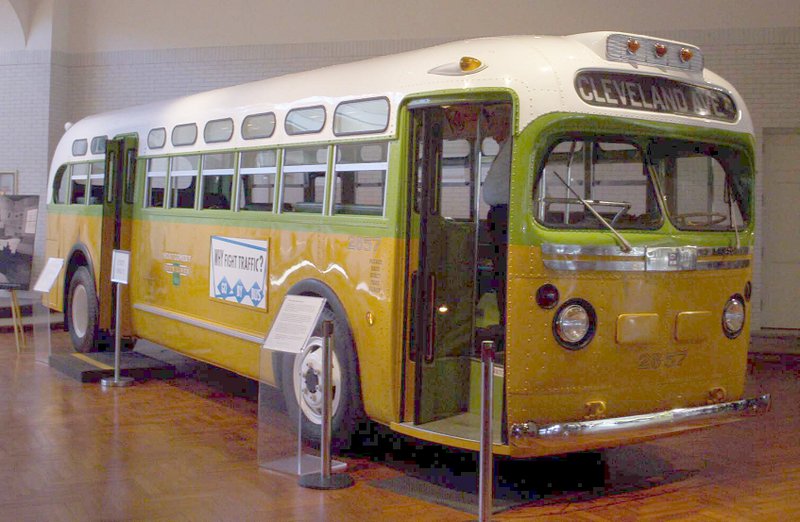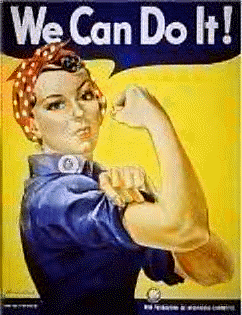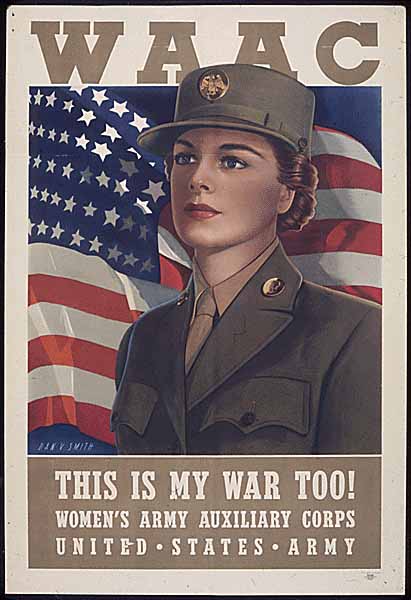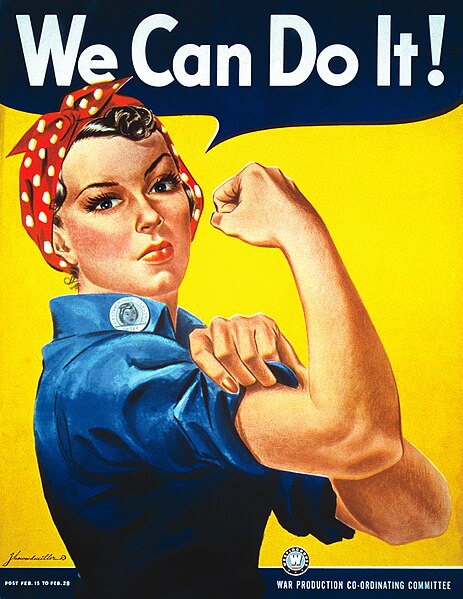 During WWII, the 3 Axis Powers that the US combated against were Germany, Italy, and Japan. On December 7, 1941, the Japanese launched a surprise attack on Pearl Harbor, a U.S naval base located in Hawaii. This sunk 4 battleships, 1 other ship, and 2 destroyers, destroyed 4 battleships, and damaged 3 cruisers, 1 destroyer, and 1 other ship. This destroyed 188 aircraft, and damaged 155 more. 2,345 military were killed, and 1,247 millitary were wounded, along with 57 killed civilians and 35 wounded civilians.
During WWII, the 3 Axis Powers that the US combated against were Germany, Italy, and Japan. On December 7, 1941, the Japanese launched a surprise attack on Pearl Harbor, a U.S naval base located in Hawaii. This sunk 4 battleships, 1 other ship, and 2 destroyers, destroyed 4 battleships, and damaged 3 cruisers, 1 destroyer, and 1 other ship. This destroyed 188 aircraft, and damaged 155 more. 2,345 military were killed, and 1,247 millitary were wounded, along with 57 killed civilians and 35 wounded civilians. Thursday, February 25, 2010
Japanese Internment Camps
 During WWII, the 3 Axis Powers that the US combated against were Germany, Italy, and Japan. On December 7, 1941, the Japanese launched a surprise attack on Pearl Harbor, a U.S naval base located in Hawaii. This sunk 4 battleships, 1 other ship, and 2 destroyers, destroyed 4 battleships, and damaged 3 cruisers, 1 destroyer, and 1 other ship. This destroyed 188 aircraft, and damaged 155 more. 2,345 military were killed, and 1,247 millitary were wounded, along with 57 killed civilians and 35 wounded civilians.
During WWII, the 3 Axis Powers that the US combated against were Germany, Italy, and Japan. On December 7, 1941, the Japanese launched a surprise attack on Pearl Harbor, a U.S naval base located in Hawaii. This sunk 4 battleships, 1 other ship, and 2 destroyers, destroyed 4 battleships, and damaged 3 cruisers, 1 destroyer, and 1 other ship. This destroyed 188 aircraft, and damaged 155 more. 2,345 military were killed, and 1,247 millitary were wounded, along with 57 killed civilians and 35 wounded civilians. FDR & The Holocaust

McCarthyism

American Culture in the 1950s

Wednesday, February 24, 2010
Japanese Concentration Camps
Before the war, there were 120,000 Japanese Americans living U.S. without any problems. However, the attack on Pearl Harbor had left a lasting fear in Americans’ mind. People were afraid of another similar attack, and became suspicious with the Japanese who live in U.S. The rumors of Japanese poisoning vegetables rose and became believable to the people. The Government’s response to the public’s fear is putting all the Japanese into concentration camps. Even Japanese who were born in U.S. or married to Caucasians were also taken to camp.
The interment started in Hawaii. Since 37% of Hawaii’s population is Japanese, it’s economy was greatly affected. However, the operation was continued despite Delos Emmons’s protest. In 1942, February 9th Roosevelt extended the order to California, Washington, Oregon and Arizona.
The U.S. confined approximately 120,000 Japanese who were loyal to the U.S. The reasons used to Justify the actions was for war and precaution. It’s not until 1965 that U.S. government agreed to compensate for the Japanese loses in property. But the money was only worth 10% of the property actual lost.
Katherine Jia
Tuesday, February 23, 2010
Japanese Concentration Camps in America

The attack on Pearl Harbor had scared many Americans into thinking that the United States might be attacked next. This, naturally, caused many Americans to be afraid and paranoid of their Japanese American neighbors. Soon, many false rumors were spread about Japanese Americans, ranging from the belief that they were poisoning farm foods to committing sabotage by mining coastal waters.
In response to this widespread paranoia and based on strong recommendations from the military, Roosevelt signed an order requiring the removal of people with Japanese ancestry from California, Washington, Oregon, and Arizona. Roosevelt justified this move as one necessary to maintain national security.
One of the problems this mass removal of Japanese Americans caused was most noticeable in Hawaii. In Hawaii, 37% of the people were Japanese Americans. The removal of all these people would lead to serious problems concerning the economy. Eventually the United Sates settled with the internment of 1,444 Japanese Americans, 1% of Hawaii’s Japanese American population. This was enough to satisfy the public of government actions, but minute enough that Hawaii’s economy would not be affected.
This roundup of Japanese Americans, aside from the ones in Hawaii, resulted in 110,000 of them being relocated to ten hastily constructed remote “relocation centers.” In reality, these were prison camps. Two – thirds of these Japanese Americans were Nisei, or Japanese people born in this country of parents who emigrated from Japan. The irony of this is that thousands of Nisei had joined the armed forces, fighting for America.
Once the war ended, Japanese Americans fought for justice and compensation for property they lost when they were moved to the concentration camps. Initially, the Supreme Court decided in Korematsu v. United States that the government’s eviction of so many Japanese Americans was justified, in the interest of national security. Afterwards, the Japanese American Citizens League worked to get the government to compensate Japanese Americans who had been sent to the camps. Although in 1965 Congress authorized the spending of 38 million dollars specifically for that purpose, it hardly covered the actual costs of Japanese Americans’ losses. It wasn’t until 1990 when President Ronald Reagan signed a bill that promised 20,000 dollars to every Japanese American that was sent to the relocation camps that Japanese Americans got a fraction of what they deserved.
by Andy Yeh and Jonathan Marson
The Civil Rights Movement
Kellie Nicholls
2.23.10
Period E
The Civil Rights Movement: Martin Luther King and the SCLC
Martin Luther King became a hugely influential leader for the African American Comm unity due to his ability to organize and lead a group that has so much going against them. Although his family was threatened, King urged his followers to not anything or anyone pull them down.
unity due to his ability to organize and lead a group that has so much going against them. Although his family was threatened, King urged his followers to not anything or anyone pull them down.
King created a new brand of nonviolent resistance based off of Ghandi which he called “soul force”. King held his philosophy even after the Brown decision. Most of the violence that was faced was murder and humiliation, including the murder of a 14 year old boy named Emmett Till who had allegedly flirted with a white woman. However, after the bus boycott ended, King joined with many ministers and civil rights leaders and founded the Southern Christian Leadership Conference (SCLC). Its purpose was to carry out nonviolent acts against the evils of second-class citizenship. The leaders of this conference hoped that it would build up a movement and win the support of ordinary African Americans of all ages. A select few, who were following this movement, including many college students, thought it was too slow and wanted the change to come even faster. As the leadership of the Conference grew, so did the ideas. They were all based off of King’s original ideas of nonviolence and organization, but soon the many that had come together created their own and passed them on until the whole community was involved.
1950s Culture
Kellie Nicholls
2.23.2010
Period E
1950’s Culture
The American dream of the 1950s began with people returning to their families and seeing each other for the first time in years. As many began to go back to work, new jobs opened up and allowed for people to have millions more employed. Franchises, or companies that offer similar products in many locations, became hugely popular including McDonalds and Macys.
As for the suburban lifestyle, the baby boom contributed to a population explosion and birthrates soared to 4,308,000 infants born in the year 1957 alone. The biggest factor contributing to the baby boom was the advances in medicine and childcare. Many new drugs were discovered that helped to rid the country of disease such as typhoid fever. Dr. Jonas Stalk developed a vaccine for polio that saved millions from getting the crippling disease. As well as children, women became a primary  focus of a lot of media. The role of the homemaker or mother was glorified in the popular magazines.
focus of a lot of media. The role of the homemaker or mother was glorified in the popular magazines.
As far as leisure went in the 1950s, there were many new inventions that gave children and adults new things to play with. Many new sports arose in the 1950s including fishing, bowling, and boating. There were also many more fans for sports like baseball, basketball, and football. Reading became a huge leisurely activity as women began to read more “do-it-yourself” manuals for cooking and building projects. As well, comic books were created for children to enjoy.
There was also a huge boost in the automobile industry as more people needed a car for transportation from their suburban homes. Highways were created across the country as more people began to drive. Teenagers also took to the roads, giving them a sense of freedom.
The 1950s brought new ideas and inventions to the table and helped to shape the world as we know it today.
Women of Wartime
Kellie Nicholls
2.23.10
Period E
The Women Of Wartimes
With all the men at war, women found the opportunity to take over the jobs they left behind and earn their own wages. Over six million women entered the work force for the first time and the percentage of women working rose to 35%. One third of the jobs were in defense plants. These jobs were harder and paid better than traditional jobs. Many women also took advantage of the jobs open in journalism and other professional jobs.

Major Battles of the Pacific
Kellie Nicholls
2.23.10
Period E
The Battles in the Pacific
The Japanese became a prime target of the United States after VE Day and the defea t of the Nazis. Ever since the attack on Pearl Harbor, the United States and Japan were formally at war and after the Nazis were defeated, the United States turned to the Pacific.
t of the Nazis. Ever since the attack on Pearl Harbor, the United States and Japan were formally at war and after the Nazis were defeated, the United States turned to the Pacific.
The next target of the Japanese was the small island of Midway, situated northwest of Hawaii. It was small, but highly important for strategy to the Japanese. However, the Americans had broken the Japanese code and found out that their next target was Midway and they prepared for battle. The Battle of Midway was the turning point for the wars in the Pacific. The Americans had caught the Japanese off guard and avenged Pearl Harbor. The Japanese lost four aircraft carriers, a cruiser, and 250 planes. Soon after, the Americans began “island hopping” and slowly won back territory from the Japanese.
(Image: The Battle for Midway)
McCarthyism
-Frank
Women in Wartime
Even though American women did not serve in the armed forces in World War II, their contributions to the war effort were pervasive and vital. As many young men had left the country to fight, women took over their roles in factories and noncombat army positions.
During World War II, many women took positions in war industries. Initially, the industries doubted that women had adequate stamina for factory work. They were proved wrong–factory employers grew to prefer women to men because they could perform the duties men could at only 60% of the salary men received. This discrimination did not deter women worker—in fact, over six million women contributed to the war effort as laborers in war industries.
The
While there was no question as to the competence and commitment of WAAC workers, they were only given an auxiliary status, which granted them the same salary as serving men, but fewer benefits. American women were so dedicated that in spite of this discrimination, three-hundred-and-fifty-thousand (350,000) women served in the WAAC and other auxiliary branches in the war effort. After thirteen (13) months of granting incomplete benefits to WAAC workers, the
During the war, women proved invaluable as laborers in war industries and as service people in noncombat positions. Despite discrimination in the form of reduced benefits and diminished salaries, women remained dedicated to the cause and viewed the war as an opportunity to combat this discrimination by proving their ability as workers. While women by no means received gender equality after the war, they received some of the respect they deserved through tireless struggle and hard work.
By Vivek C. and Jesus G.
Japanese Concentration Camps in America
-Spencer
Women in Wartimes

factories ranged from 25 to 34. Majority of women had night jobs when worked on the factories
because they had to fulfill their normal job in the day time as being a mother. Not every women
in america went to work on factories. The demands put on American industry by the war
machine were immense. With some ten million men at war and the rest of the male population
at work, it was clear the only way America would be able to win the war was if it enlisted large
numbers of women for employment. America needed it's women to go to work to build the
planes, tanks, and ships needed to fight Hitler. World War II, more so than any other war, was a
war based on production, and so it was time to bring American women into industry. Women
played a big role in world war 2, without them...we might of had a different ending.
Women in Wartime

Although women were not allowed to serve in the war, they did contribute a huge amount to the war effort. When the U.S joined in World War Two, businesses feared that they would not have enough workers to meet their industrial needs. In 1944 a lot of men were going to war, and businesses thought they would have to drastically downsize their companies because of labor issues. Despite the draft, war industries had nearly three times as many workers in 1944 than they did in 1941. Out of these 18 million new workers, more than 6 million were women. Initially, war industries feared that women did not have the qualifications that were needed to complete jobs such as riveting guns or using welding torches, and were reluctant to hire them. However as the demand for workers grew, women were able to prove that they were just as qualified for war industry jobs as men.
As more women started proving themselves, employers could not hire enough of them. Industries started to flourish during the war and it was partly because of women. There were many who were willing to work because they had to support themselves and their families, and they were eager to prove themselves. Employers were especially eager to hire women because they earned only about 60 percent as much as men doing the same jobs.
Women were hugely helpful to the war and were an essential part in the business and war industries. They were also able to prove themselves as valuable assets to employers for the future.
-Cory and Ofri
The Tuskegee Airmen
The Tuskegee airmen were the first African American aviators in the US army. This was a big deal at the time because the army was under the influence of the Jim Crow laws. The group consisted of 250 of the finest African American pilots and was under the command of Benjamin O. Davis Jr. They were treated rather harshly when it came to their missions. They were only allowed to receive medical attention from doctors of their skin color. When it came time to invade Sicily the Tuskegee airmen were the first to sacrifice their men in aerial combat and they completed the task. Regardless they were able to find success through all of the grueling missions they were assigned. As soon as the news spread about their success, they were heavily criticized and almost disbanded due to some flawed statistics. Although they received a great number of medals during their service, they were greatly rewarded for putting up with hard times by the president George W. Bush Jr.
The Montgomery Bus Boycott

Rosa Parks was born in 1913. She was an activist for African American civil rights who worked with the NAACP and many individual civil rights leaders, including Martin Luther King, Jr. However, she was most famous for starting the Montgomery Bus Boycott. On December 1, 1955, Parks refused to give up her seat on a bus for a white person. This type of protest had been done before, but the other protests had not caused boycotts.
Technically, Parks had not even broken any laws. The buses were segregated and drivers were allowed to assign seats to keep them that way, but they could not make people move or stand if the bus got full. However, because racism was so prevalent, it had become common practice for bus drivers to make black people give up their seats if there were white people who would have to stand if they didn't. Parks was arrested even though she had not broken any laws by refusing to give up her seat.
E.D. Nixon, a civil rights activist, and Clifford Durr, the lawyer who would later represent Parks, bailed her out of jail the next day. Nixon then contacted a member of the Women's Political Council (WPC), which then became the first organization to officially support the Montgomery Bus Boycott. The Montgomery Improvement Association (MIA) was formed to lead the boycott. Martin Luther King, Jr was chosen as the organization's leader. This boycott raised awareness of the injustices being done to African Americans and paved the way for many other civil rights movements.
~By Erin M
Tuskegee Airmen


In 1941, they stared to train in Rantoul, Illinois, and formed the 99th Fighter Squadron. Over 250 men enlisted and were trained at Chanute Field, in Rantoul. The airmen were placed under the command of Captain Benjamin O. Davis, Jr. who was one of the few African American West Point graduates. Once considered ready for combat, the 99th squadron participated in the North African campaign, and would later on move to the Mediterranean Coast, and Italy. Afterwards, they traveled to Germany, and Poland escorting bombers into battle. In all, 994 pilots were trained in Tuskegee, and 445 were deployed into combat. Of those 445, 150 lost their lives.
On march 29th, 2007, about 350 Tuskegee Airmen received the Congressional Gold Medal at a ceremony in the US Capitol rotunda. The place where the airmen trained is now a national historic site, Tuskegee Airmen National Historic Sight. During the inauguration of Barack Obama in 2008, the remaining members of the Tuskegee Airmen were in attendance. Through their courageous acts, their legacy will live on for generations.
By: Yotam Kasznik and Jonas Pinnau
FDR and the Holocaust
Women in WWII
 Women really stepped up in wartime. The war would not have been a success if it wasn't for their contributions. To produce the ammunition, a lot of factories that once manufactured consumer goods now made tanks, bombs, and other millitary supplies. Out of the 18 million people who worked at these factories, six million were women.
Women really stepped up in wartime. The war would not have been a success if it wasn't for their contributions. To produce the ammunition, a lot of factories that once manufactured consumer goods now made tanks, bombs, and other millitary supplies. Out of the 18 million people who worked at these factories, six million were women.Throughout history, women have been known as gentle. Because of this, major companies weren't sure whether or not to hire them for dangerous jobs. Once they proved themselves to be strong, and capable of using dangerous machinery, it was a done deal. Because men were (and still are) paid a lot better, companies decided to hire women to save money.
In order to fight a war like WWII, you need supplies. Most of the healthy young men were at war, so it was very important that women took the jobs. If this didn't happen the war would have gone differently.
Crazy Bear Against Newborn Cub

Harry Truman’s Presidency
Harry S. Truman (left), son of a Missouri livestock trader, was born in 1884. After failing to mount a business, he sought a career in politics, and he earned the respect to run as Franklin Roosevelt’s Vice-President. On April 12, 1945, Roosevelt died and Truman took over, thrust into the presidency only a few months after becoming Vice-President. In negotiations with the Soviet Union after World War II, Truman felt that the United States had a large economic stake in not allowing the spread of communism, and instead spreading democracy and free trade practices around the globe. Truman wanted to keep up the boom that had occurred during the war.
The first attempts to contain Soviet influences occurred in Turkey and Greece, where Britain asked the United States to take over responsibility. On March 12, 1947, Truman asked Congress for $400 million in economic and military aid to these two nations, and he formed the Truman Doctrine: “it must be the policy of the United States to support free peoples who are resisting attempted subjugation by armed minorities or by outside pressures”. In short, it was an official statement declaring indirect war against communism and the Soviet Union.

In another fight against communism, this time in China, General MacArthur (right) butt heads with the new president. MacArthur wanted a full-scale war against China, and certain that he was correct in his opinion, he attempted to outdo the president. Truman, however, was just as stubborn, and on April 11, 1951, Truman shocked the United States by firing MacArthur. The public clearly backed the general, with 69% of the American public against Truman’s decision, but Truman fought through it, and eventually the public saw the reason for the madness.
By Benjamin Hendricks and Andrew Chung
Rosa Parks and Her Struggle

On December 1st, 1955, four African American's were asked to move to the specified "colored" section, so that a white man could sit without having to sit next to any African Americans. Rosa Parks, a seamstress and a NAACP officer, was on of those passengers. Although, when asked to move, unlike the other passengers, she refused. And due to this simple act of rebellion, she was arrested.
Women in Wartime
Rosa Parks

ROSA PARKS
Rosa Parks By: Diane Jung
Rosa Parks was born in Tuskegee, Alabama and attended the private school called the Montgomery Industrial School for Girls. She persisted despite the fear that she and her family lived in and took every opportunity she had to better her fortunes. She eventually graduated from the Alabama State Teachers College and then settled with her husband, Raymond Parks. Both Rosa and Raymond Parks joined the NAACP and helped their locals in various trials related to murder, flogging, peonage, and rape. Along with her work in the NAACP, Parks had an award in her honor, the Rosa Parks Freedom Award, founded the Rosa and Raymond Parks Institute for Self-Development, was awarded the Presidential Medal of Freedom by Clinton, and also received the Congressional Gold Medal.
Parks lived the rest of her life in peace in Detroit and died on October 24, 2005. Her casket was placed in the rotunda of the United States Capitol for two days, an honor left for United States presidents.
Rosa Parks influenced and changed the lives of many and will forever be remembered as a pioneer in American History.



